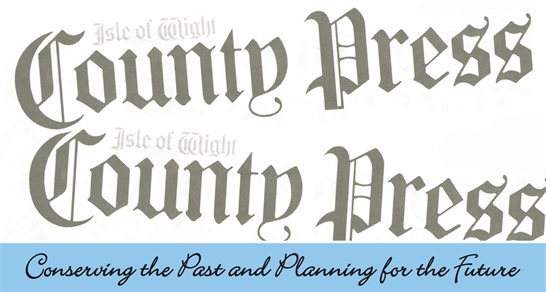December 2022
On the Island there are three great Tudor Manor houses that can easily be seen on the Back of the Wight.
The earliest of these is Mottistone, now owned by the National Trust. Part of this building, the south wing, dates from the 1400s, and the remainder is 1500s. The date stone above the main doorway displays 1567.

Mottistone Manor
Built of local stone, Mottistone also boasts several courses of stone slabs on the lower part of the roof, with clay tiles above.
Many of the great Island families have owned the manor, including the de Insulas, who took their name from the Island. Their name later changed to Lisle – one of the richest Island families. The farmland was good, providing income. The Cheke family held the manor for over 300 years, and it was they who built the present house.
Perhaps the house would have been changed in later centuries, had it not been for a landslip which engulfed the back of the house in 1706. The liveable part of the house was demoted to just a farmhouse for the next two hundred years.
In 1887, Sir Charles Seely bought the estate and retired to Brook House. It was his son, General Jack Seely, an architect, who in 1927 set about restoring Mottistone. 1400 tons of slipped soil were removed and the wall was found to be in good condition. The building was restored to a comfortable home.
The large barn protects the house from the south west winds, and was altered in the 1900s to create an imposing entrance to the house.
Wolverton Manor at Shorwell was built in the typical E shape of the Elizabethan period by John Dingley. There had been a house here before Norman times, possibly surrounded by a moat. The Elizabethan house required no such defences. It suffered a few changes over the years, such as sash windows being added to the western half in the 18th century, and an uncompleted Venetian window on the back of the building.
By the 1970s the building was derelict and luckily was bought and slowly restored over several years using appropriate materials. Sitting in the great hall listening to Tudor recorder music at the finale to Living History Week in the 1980s the owner said, “Do you think the house realises what is happening to it?” The answer was yes, as the Tudor spirit of the house was so apparent.
Nearby West Court was built in several stages, starting around 1517. It retains the typical stone mullioned windows of the Tudor period. There is a later Jacobean wing, giving the building a comfortable protective shape, similar to Mottistone.
Like Wolverton, a massive stone barn was constructed at West Court, again giving some protection to the house from the winds off the sea. The de Lisle family were also owners of this manor in the Norman times.
The Back of the Wight saw prosperity in Tudor times, as shown by these beautiful buildings.
By Sarah Burdett
[Go Back]

